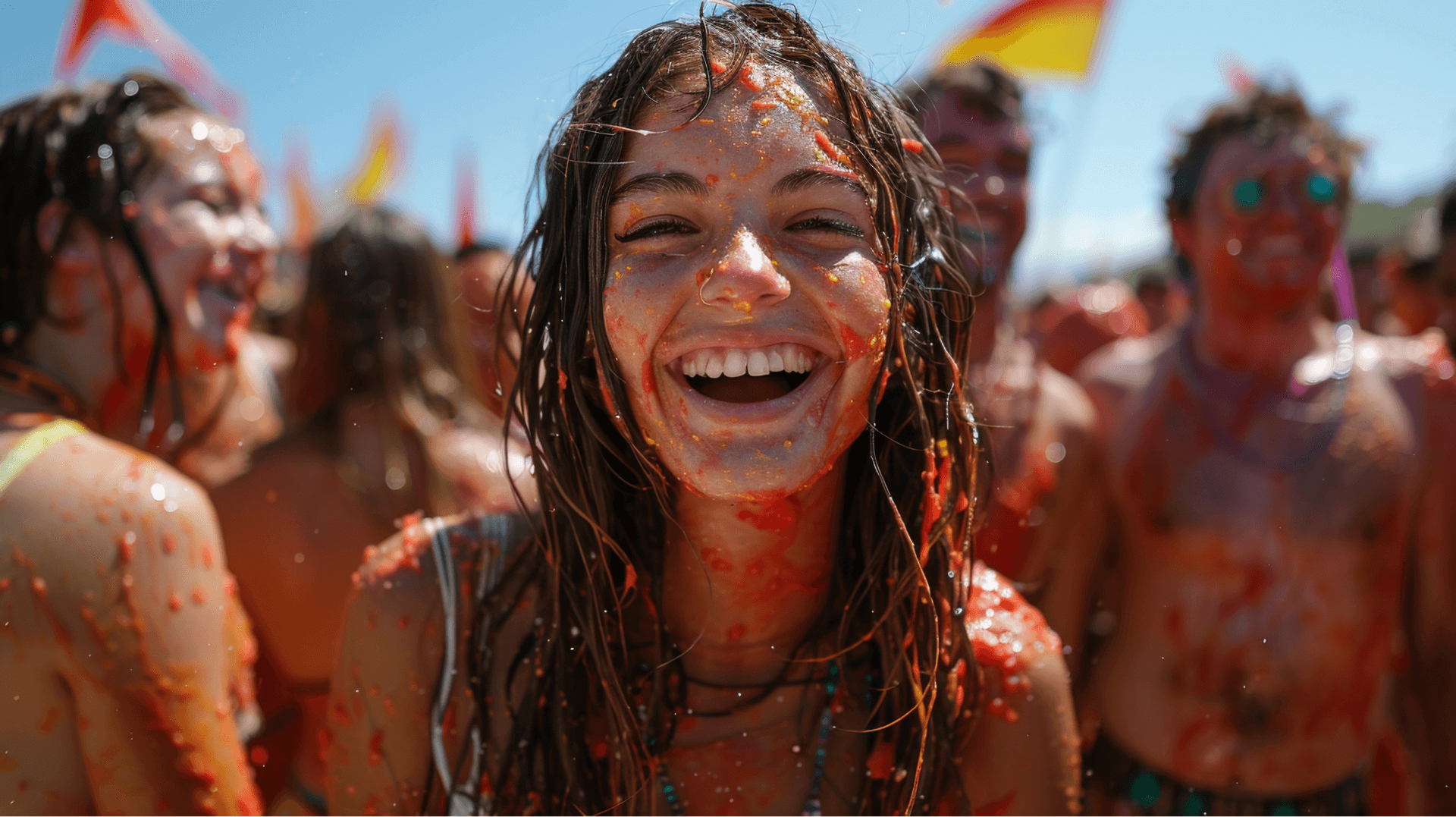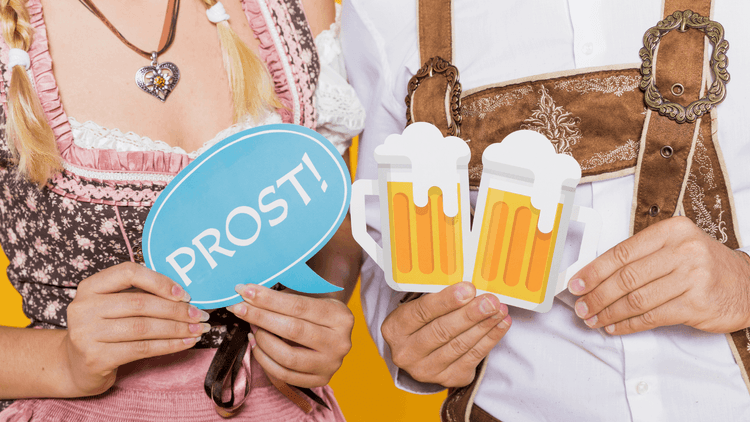Spain is famous for a strong sense of community and colorful celebrations. Their history, dating back to the Romans, accounts for a variety of rituals and festivities. Spanish festivals fill the streets with music and movement and perfectly represent the vibrant Spanish culture. Spaniards definitely know how to have a fiesta. And the best part is that Spanish celebrations can last from a few days to a month. For travelers, these events are an authentic glimpse into the locals' daily lives and a wonderful opportunity to connect with them.
La Tamborrada Drum Festival
The town of Tolosa in San Sebastian celebrates the Tamborada Drum Festival on January 20th. Locals gather in the Plaza de la Constitución. They watch the flag being raised and marching bands playing drums and barrels. The crowd joins in, clapping and singing the same tunes that repeat in a loop for the next 24 hours. White and blue are the main colors of this Spanish festival. These are the primary colors used on banners and flyers, the marching bands' uniforms, and the participants' clothing.
The tradition of La Tamborrada started back in the 19th century. It celebrates the town’s resilience during the harsh Napoleonic Wars. Participants in the festival form large drum circles, playing a synchronized rhythm.
Carnival
Celebrated all over Spain, some areas stand out. The most popular examples are the festivities in Cádiz, Santa Cruz de Tenerife, and Sitges. They boast more impressive displays and gather impressive numbers of festival-goers. The event is organized similarly regardless of the region. As a rule, a local authority opens the festival with a speech. The streets feature lively parades, performances, and music. Participants dress in sophisticated costumes and wear extravagant masks. And for good reason. There is a contest for the best outfit. Each region chooses its Carnival Queen.
The Carnival closes on Ash Wednesday. The ending procession is a traditional parade called "Burial of the Sardine." That is a light-hearted ceremony, a parody of a burial. The attendees escort a symbolic figure shaped like a sardine to burn it. On a deeper level, the process is a symbol of transformation.
The dates of the famous Spanish festival vary, just like the dates for Easter. It comes before the 40-day Lent preceding Easter. The celebration is a wonderful chance to have fun before staying away from meat and partying for over a month. Spaniards take full advantage of the Carnival.
Las Fallas de Valencia

Las Fallas de Valencia is one of the holidays that lasts several days, a minimum of five. Although it starts on March 14th and continues until the 19th, the fun can begin as soon as the first day in March! This is one of the most famous Spanish festivals. It celebrates the arrival of spring and has undergone a fascinating transformation over time.
The story says this originated in the 18th century. Local carpenters would burn the wood scraps left over from winter work to honor Saint José, the patron saint of carpenters. As the celebration caught on, they replaced the wood scraps with simple wooden figures to burn. Those were called "ninots," translated as puppets or dolls. The complexity and size of these figures evolved over time. Nowadays, the festival in Valencia features large figures made of papier-mâché, wood, and even metal. These qualify as real works of art beloved by tourists from all over the world.
Las Fallas is often referred to as the festival of light and fire. It ends with the burning of the figures. The event is a UNESCO-recognized festival. It reflects the local culture and showcases social issues from a humorous point of view.
Semana Santa
The Holy Week, locally known as Semana Santa, celebrates the last week of Lent. Participants carry ornate floats, also called "tronos," depicting Jesus and Mary, as well famous scenes from the Bible. The entire procession represents Jesus's crucifixion and resurrection. Some regions prefer a more solemn style, while Seville, Málaga, and Granada hold the most colorful celebrations. Musicians often accompany them.
The Penance procession is marked by members of religious brotherhoods known as "cofradías" or "hermandades." Wearing long robes and tall, pointed hoods, they move solemnly through the streets, carrying religious icons and symbols representing the Passion of Christ. They are also responsible for organizing the celebration. Moreover, each family is part of a certain brotherhood.
Feria de Abril

A week after Easter, Seville comes alive with Feria de Abril, or April Fair. The festival is renowned for Flamenco dancing and music. The colorful clothing is another feature typical of the celebration. The festival is a modern version of the livestock fair from the 19th century. Merchants came to Seville to trade their animals and crops. With time, the fair became a reason to meet up, eat, drink, and dance, growing into the impressive festival we know today.
The "Casetes", translated as tents or booths, stretch along the streets. Each Caseta gathers between 10 and 50 people - family and friends. They eat Andalusian dishes and invite their friends over as the streets fill with the tunes of the traditional Sevillanas.
Fiesta de San Isidro (Madrid)
Madrid commemorates its patron saint, San Isidro, for nine days every year. Participants in the festival enjoy the parades, fairs, art exhibitions, and plays. Saint Isidro is known for performing miracles, including his ability to find water. So, one of the traditions is to bless and drink water next to the Chapel of San Isidro.
The festival hosts a lot of free activities for families to enjoy. Among them, the "chotis" - Madrid's traditional music and dance - is a must. The crowds come to the Plaza de Toros every evening to watch bullfights.
San Juan
Celebrated especially in coastal regions, San Juan honors the summer solstice on June 23rd. The bonfires on the beach symbolize the cleansing of the spirit. Locals often jump over flames for good luck. It is essentially a ritual celebrating change.
Speak a new language with confidence!
Build fluency faster with FunEasyLearn — just 10 minutes a day is enough to make real progress.
Running of the Bulls (San Fermín Pamplona)

The San Fermin Festival in Pamplona, Spain, is a week-long celebration honoring the city's patron saint. Its most famous event is "Encierro," or Running of the Bulls. Participants run alongside powerful bulls through the narrow city streets.
This historic practice emerged in the 16th century as part of festivities honoring Saint Fermín. Livestock used to be moved from rural areas into the city. Over the years, the herding of livestock became the event we know today.
The Running of the Bulls starts at around 8 AM, on an approximately 0.54 miles (around 875 meters) route through the narrow streets. Six strong bulls run through the course leading to the bullring, making the experience thrilling and dangerous at the same time. The spectacle usually lasts around two to three minutes. The bulls race through the streets, surrounded by cheering crowds.
As you may expect, ambulances and medical staff are always nearby for safety purposes.
Santiago de Compostela
Celebrated on July 25th, the Feast of Santiago celebrates its patron saint. He is often called "Santiago de Compostela," meaning "Saint James of the Field of Stars". The legend says a star showed the way to the saint's remains, hence the name.
The celebration of Santiago de Compostela marks the end of the Camino de Santiago pilgrimage - an annual event that attracts thousands of pilgrims and tourists. In addition to the religious processions and ceremonies throughout the city, the city holds cultural events. Traditional music and local food fairs are essential elements of the festivity.
La Tomatina

Who hasn't heard of the famous food fight from Buñol in the Valencia region? The exact origin of the festival remains a mystery. The timing is around 1945. One story says it started with an amicable fight among friends. Another version speculates it was a conflict that escalated into a food fight. To this day, locals and tourists participate in the food fight for fun every year on the last Wednesday in August. The tomato fight lasts an hour, followed by live music and festivities.
Fiesta de la Vendimia
In La Rioja, the celebration of the grape harvest takes place in late September. La Fiesta de la Vendimia is a wonderful chance for participants to see the wine-making process. Participants can watch or take part in stomping grapes. Wine There are also wine tastings from local producers, exhibitions of traditional arts and crafts, and, of course, good music.
Día de la Hispanidad
The national holiday of Spain is celebrated on October 12. Spaniards enjoy the parades, military displays, and cultural events. Madrid holds the most impressive military parade, showcasing Spain’s armed forces. Many cities organize cultural activities that promote Spanish traditions. That makes the festival attractive for tourists.
La Almudena
Celebrated on November 9th, the holiday honors Almudena - the patron saint of Madrid. Her image is in the Almudena Cathedral, the focal point of the festivity, where a special mass is held.
The public celebration originated in the 16th century as a religious holiday. The religious part of the holiday consists of a solemn march. Participants wearing traditional clothing carry the statue of the Virgin of Almudena through the streets of Madrid. They say prayers and sing hymns.
Once the religious part is over, the cultural activities begin. The streets feature traditional music, dancing, and performances. Local vendors sell street food and crafts.
Learn Spanish with FunEasyLearn

Improve your Spanish with FunEasyLearn to fully enjoy Spain and immerse yourself in its unique culture. Whether you’re ordering tapas during La Feria de Abril or chatting with fellow participants at La Tomatina, speaking Spanish will ensure an unforgettable festival experience.
Why choose FunEasyLearn?
- Impressive vocabulary. Build a strong core vocabulary with 6,000 words and 5,000 phrases and expressions.
- Well-structured content. Access 350+ practical topics and subtopics. Focus on the vocabulary you need for a personalized learning experience.
- Practical progress check. Use FunEasyLearn to keep track of your progress, set goals, and review what you've learned. Monitor how many words and sentences you've mastered to keep your goals in check.
Spanish is the key to unlocking Spain's cultural treasures. Learn the language to experience its rich culture and enjoy the famous Spanish festivals.
FAQ
How many festivals does Spain celebrate?
Spain counted 874 festivals in 2021.
What Spanish festivals are best for families?
Some family-friendly Spanish festivals are Feria de Abril in Seville, Las Fallas in Valencia, and San Isidro in Madrid. Each includes fun activities for all ages.
When is the Running of the Bulls?
The Running of the Bulls is held annually from July 6th to July 14th during the San Fermín Festival in Pamplona.
Does Spain have a festival dedicated to wine?
The Fiesta de la Vendimia is held in several Spanish regions to celebrate the grape harvest. Some of the activities include grape stomping and wine tasting.
Do all Spanish festivals include fireworks?
Most Spanish festivals include fireworks. Some notable examples are festivals such as Las Fallas and Feria de Abril.
What is the origin of La Tomatina?
The exact origin of La Tomatina is unknown. One of the most popular versions is a friendly food fight during a local festival.
Are you ready to fully experience Spanish festivals?











